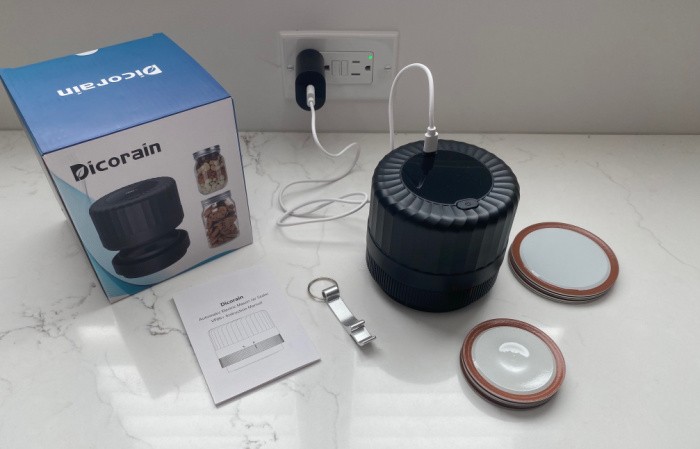
I love to take pictures to show how something works. So today, it’s about Dicorain™, a new way to vacuum seal bottled foods. Some of you were asking me about this Dicorain™. Ray mentioned it in a comment, and I decided to buy and try it. Matt mentioned I should post about it, so here we go, my friends. Please keep in mind I purchased this item myself.
Not all foods can be safely vacuum-sealed, so let’s discuss that. This unit is similar to a FoodSaver but without the machine. You can use it to remove the air from certain foods in a container to extend their shelf life. But remember, some foods should still be in the refrigerator or freezer.
I’m a Master Canner Preserver, and I’m cautious about how I store my food. I follow the USDA guidelines. Check out my archive of posts to read about food items that shouldn’t be canned; they aren’t safe, even though you may have a friend or neighbor who says otherwise. I follow the motto: “Better safe than sorry” when canning and storing foods.
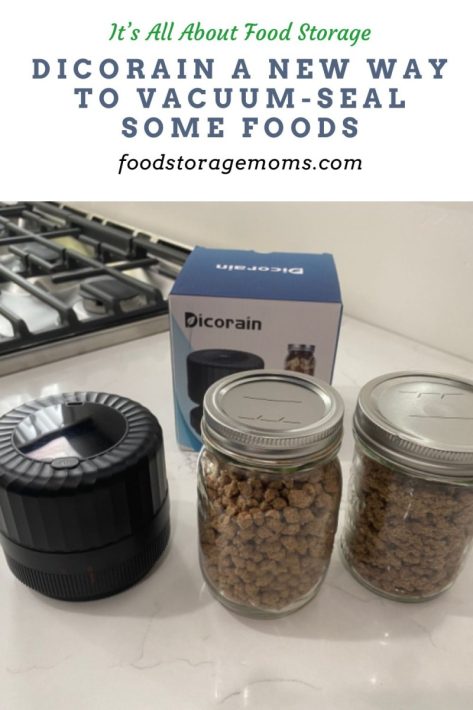
I’m not sure the USDA has anything to say about using a FoodSaver, but most of us know what we can and can’t put on the shelves when using a FoodSaver or Dicorain. Some of you will use oxygen absorbers, and I don’t. I also don’t live where it is humid. It’s a personal decision. I haven’t stored my homemade dehydrated food for more than one year.
Dicorain-Mason-Jar-Vacuum-Sealer
How To Use The Dicorain Vacuum-Sealer
Dicorain: Contents In Box
The unit comes in a relatively small box. It contains the sealer unit, a USB Type-C cord to charge its rechargeable battery, a lid opener, an instruction booklet, and some regular and wide-mouth mason jar lids to help you get started. You may want to keep the box to store the unit and its accessories easily when not in use.
Before using the Dicorain, you need to charge the battery. The contents picture shows the Type-C cable plugged into the top of the unit and then into a wall outlet using a USB transformer (not included). The cable is designed for a USB transformer or your USB-capable laptop. If fully discharged, recharging the unit may take over two hours. The LED screen on top shows the percentage charge until it reaches 100%. It’s suggested that you recharge the unit when it gets near the 20% charge level so it will work for the project you’re currently doing.

Dicorain: The Red Line on the Right Shows the Locked Position
The unit is designed to vacuum seal both regular and wide-mouth mason jars. When in the locked position, it is ready to vacuum seal the regular-mouth jar lid. To remove the lower section of the unit to access the wide-mouth sealing converter, you turn the lower section counterclockwise.
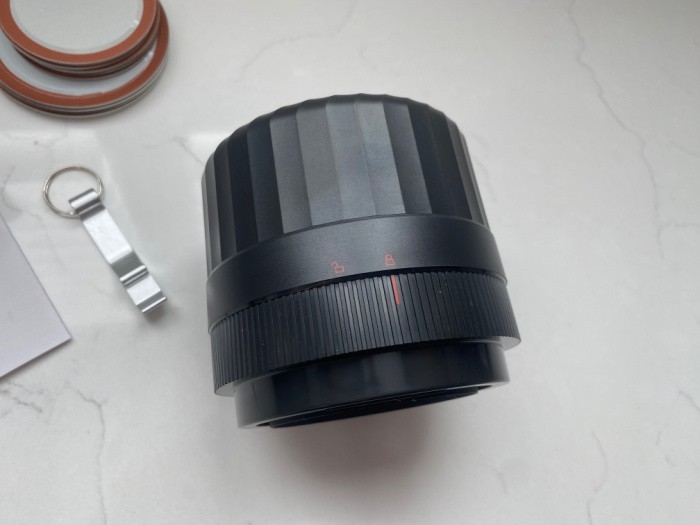
Dicorain: The Unlocked Position of the Unit is to the Left
You can pull the two sections apart once you line up the red line with the picture of the “lock” with the latch open. This now allows you access to the silicone sealing ring that provides vacuum sealing for the large-mouth lids.
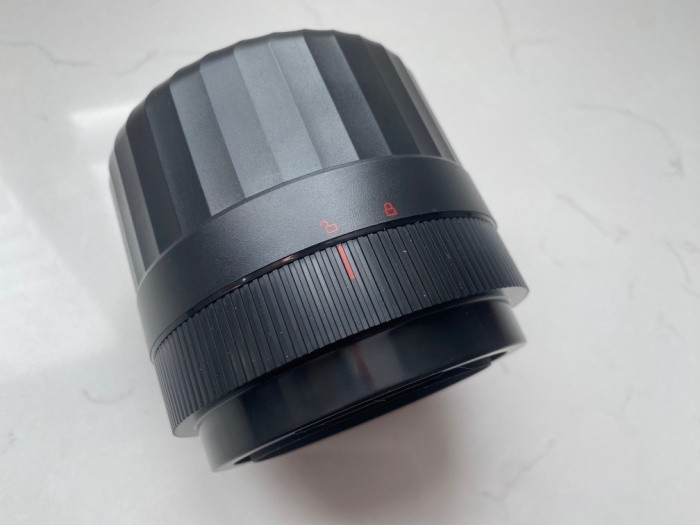
Dicorain: Regular Size Jars
This picture shows the unit with both sections intact and ready to seal the regular-size lid. No matter which size lid you are placing on a jar, ensure the jar opening and the silicone seal of the Dicorain are clean.
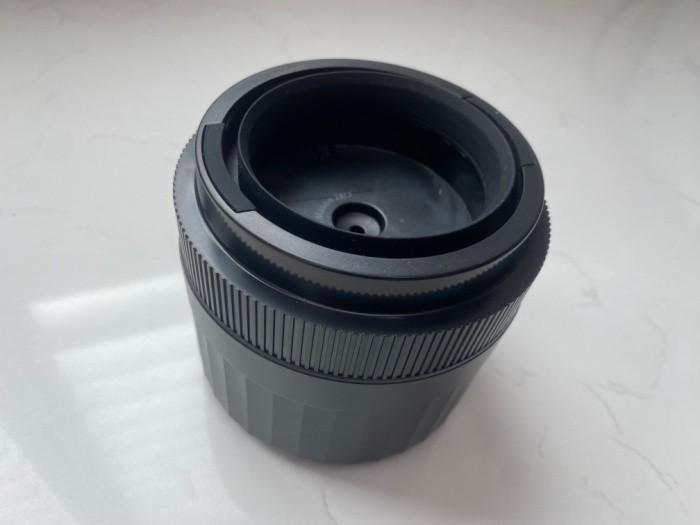
Dicorain: Filling Jars With Funnel
My kitchen has many gadgets, including a funnel to help me fill mason jars. It works with both regular and wide-mouth jars and makes filling them easy without spilling. For best results for sealing, fill the jars with the food product up to the narrow part of the jar, and before reaching the lid ring threads, as shown below.
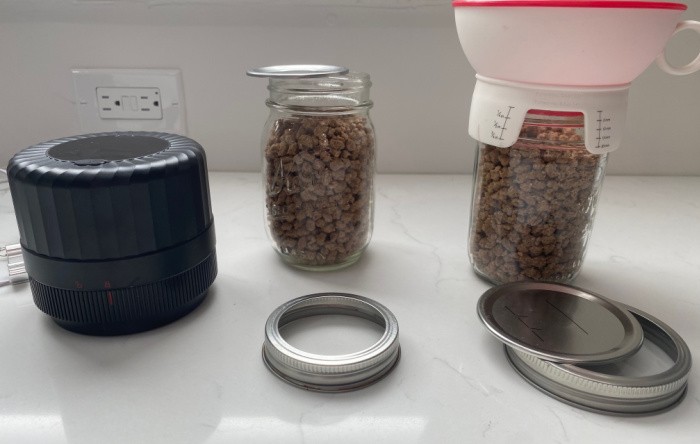
Dicorain: Vacuum Sealing a Wide Mouth Jar
This picture shows the unit with the regular-mouth jar sealer section removed from the unit and the unit firmly seated on top of the filled wide-mouth jar. If not firmly seated, the vacuum can’t seal completely, and you’ll have to try again. When both sections are connected, you perform the same steps when sealing the regular-mouth jars.
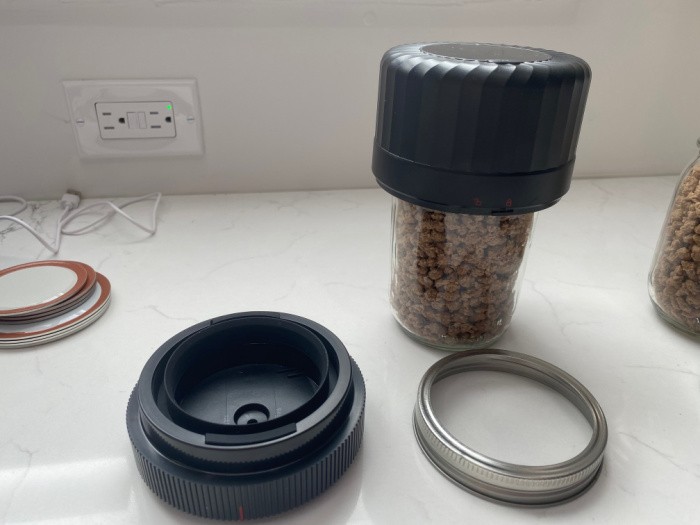
Dicorain: USB Port and On/Off Button
The top of the unit has an LED display area with a light in the middle. The light shows the number of seconds the unit has used to seal the lid once to push the On/Off button. Both size lids should take 30-40 seconds to complete the job, and 40 seconds is recommended. It will automatically shut off when complete. You activate the vacuum sealer by pushing the On/Off button on the opposite side of the unit’s top. You can turn off the sealing process by pressing the button, but by doing so, you will interfere with the sealing process.
While charging, the LED light shows the percentage charge. If you push down the button for a few seconds, it will show the remaining charge when it is not plugged in.
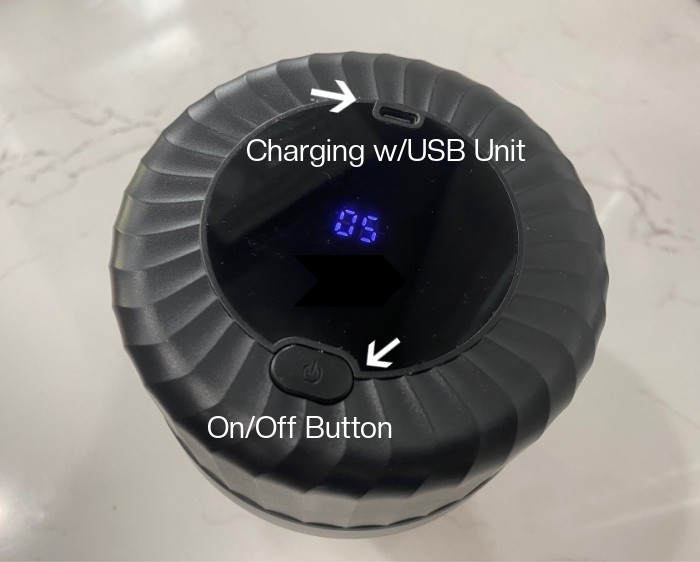
Dicorain: Put A Lid On Jar
Of course, you seal the jar with the lid before putting the jar ring on. Again, ensure the lid and the jar opening are clean and free of any debris from filling the jar with the food product.
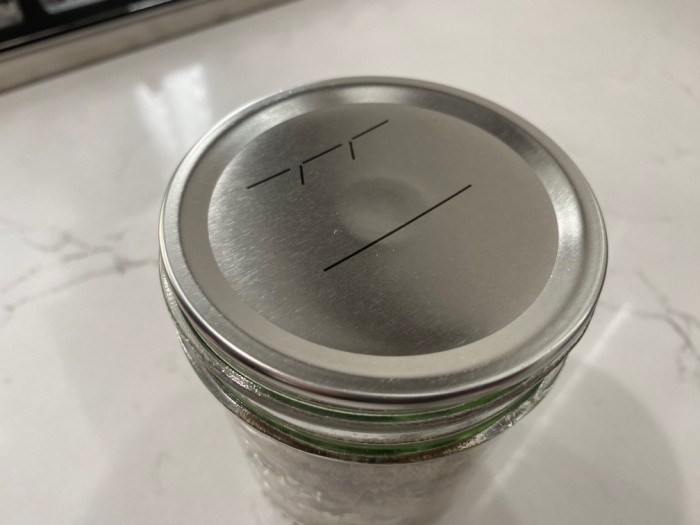
Dicorain: Turn It On To Seal
Here, you see the number of seconds the unit has been running once the ON/Off button is activated.
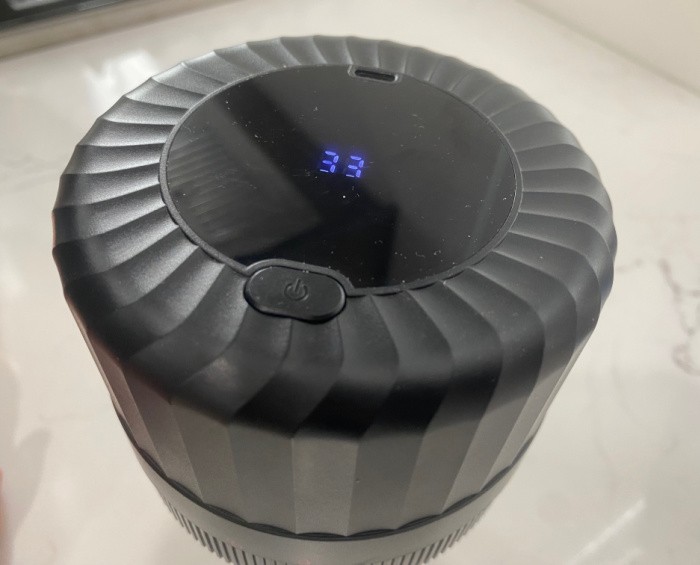
Dicorain: Vacuum Sealed Jar
With both Ball and Kerr jar lids, the vacuum seal has succeeded because the lid’s middle is recessed. If the lid’s middle is still upright, you must repeat the sealing process. If it still hasn’t worked, you may have a faulty lid that needs to be discarded.
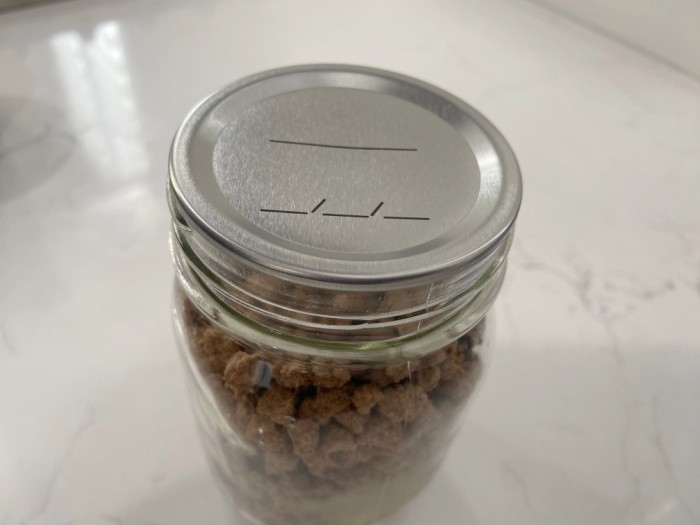
Dicorain: Vacuum Sealed Jars with Rings
Once you’ve completed the vacuum sealing process, put the jar rings on the jars to help hold the lid in place. It would help if you didn’t have to tighten them more than a finger tight.
Please note: When water bathing or pressure canning food, after 24 hours, you remove the rings.
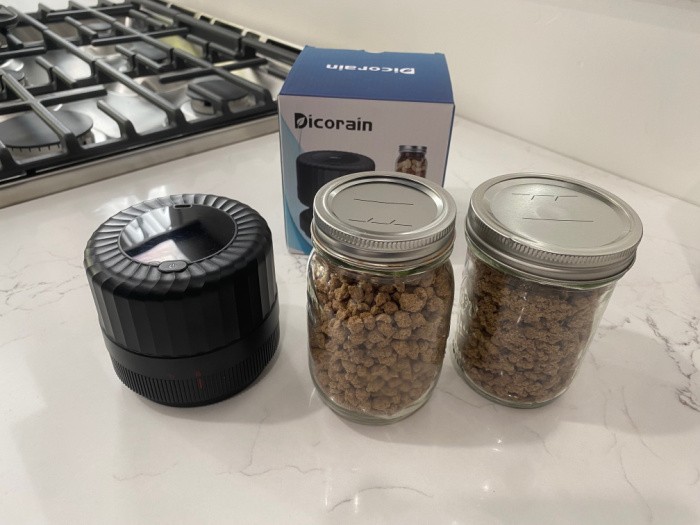
Dicorain: Removing Lids
When it comes time to use the food product, you can use the provided lid remover or a regular manual bottle opener you use for soda bottles.
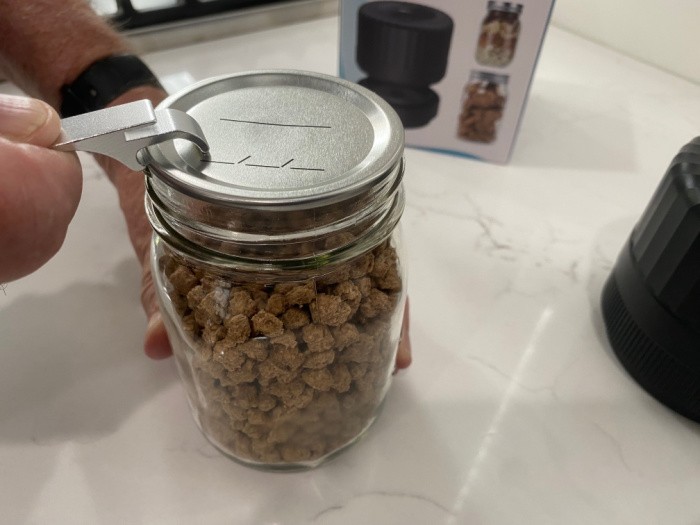
What You Can Vaccum Seal
The Dicorain can vacuum seal pretty much any food item. This unit isn’t designed to seal your mason jars for long-term food storage. I plan to use it for shorter-term storage of items I’ll keep in my fridge or pantry. In today’s post, the food you see in the jars is some freeze-dried meat from a #10 can that got damaged in our recent move. I put it in a couple of jars and store it in the fridge over the next few weeks until I decide to use the food in a recipe.
- Fresh Fruits: like strawberries, blackberries, or blueberries (refrigerate)
- Grapes: Refrigerator
- Carrots and Celery: Refrigerator
- Shredded Cheese: Refrigerator or freezer
- Lettuce: Refrigerator
- Pasta: Pantry
- Nuts: Pantry or freezer (I freeze all my nuts)
- Stacked Salad: Refrigerator
- Popcorn: Pantry
- Cornmeal: Freezer
- Pancake Mix: Refrigerator or Freezer
Precautions for Safe Use
Some things to consider for safe and proper use:
- Fully charge the unit before each use.
- Don’t try to sanitize the unit or any accessories by running them in your microwave.
- Please don’t put the unit or parts in a dishwasher or submerged in liquids like your sink. Wash with a damp cloth.
- Don’t clean the unit or the silicone rings with steel wool, abrasive cleaners, or corrosive liquids.
- Don’t have wet hands when plugging the USB cord into the unit, laptop, or wall outlet.
- The unit comes with a 6-month warranty.
Final Word
What I love about this unit is the price and convenience. I can get it out and make it much more accessible than my Food Saver unit with the needed vacuum seal accessories. Most of us have mason jars, which you can use wide or regular-mouth jars. This gives us one more way to preserve our food. Please remember that your vacuum seal must be refrigerated or placed in the freezer for some of your food. May God Bless this World, Linda
The post Dicorain™ A New Way To Vacuum-Seal Some Foods appeared first on Food Storage Moms.
from Food Storage Moms
No comments:
Post a Comment